Aerial ignition to cause increased smoke
By Jon Johnson
MOUNT GRAHAM – Crews have been battling the Frye Fire on Mount Graham for three full weeks and are now wrapping up contingency plans for snuffing it out.
The fire has grown to 39,051 acres and is the largest active wildfire in Arizona and the second largest in the nation. The Type 1 Northern Rockies Incident Management Team led by incident commander Greg Poncin took over management of the fire Sunday and has increased on the progress of the former teams. Containment as of Wednesday morning was listed at 43 percent. A total of 825 personnel were fighting the blaze as of Wednesday morning, with 16 hand crews, 41 engines, 10 helicopters, 11 water tenders and seven dozers. The estimated cost to fight the fire has risen to $11.6 million.
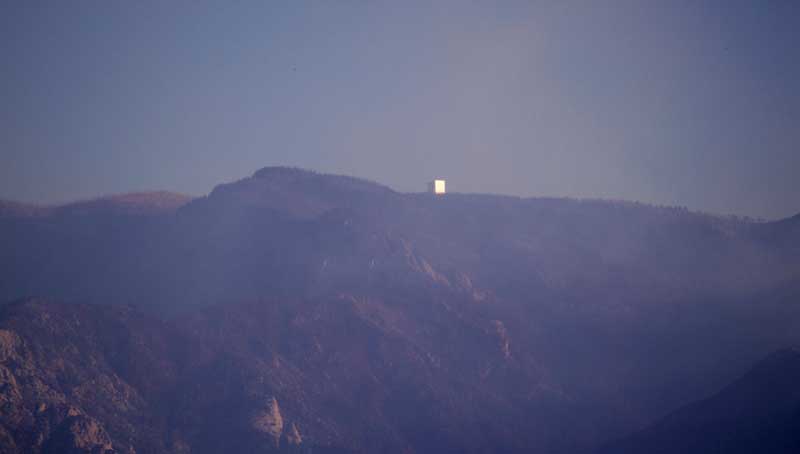
Jon Johnson Photo/Gila Valley Central: The Large Binocular Telescope of the Mount Graham International Observatory shines like a beacon. The MGIO survived a brush with the fire as flames passed all around it on its path southward.
While fire activity was minimal Tuesday, it was still pretty active in the mid slope area of the southern side as it burned all night, according to Frye Fire public information officer Mike Cole. An aerial ignition back burn operation to bring the fire down slope to the fire line at Highway 366 was planned for Wednesday morning. The ignition began around 1 p.m. and had one line completed by 1:20 p.m. Several other lines are also in the plan to help control the fire’s growth, according to Cole. During the aerial ignition, helicopters drop a Delayed Aerial Ignition Device (DAID) or ping pong ball system. The DAID utilizes plastic spheres containing potassium permanganate and are injected with ethylene glycol before being immediately jettisoned. The chemicals react thermally to produce a flame that consumes the ball. The balls can be efficiently dropped to create most any type of burn pattern desired.
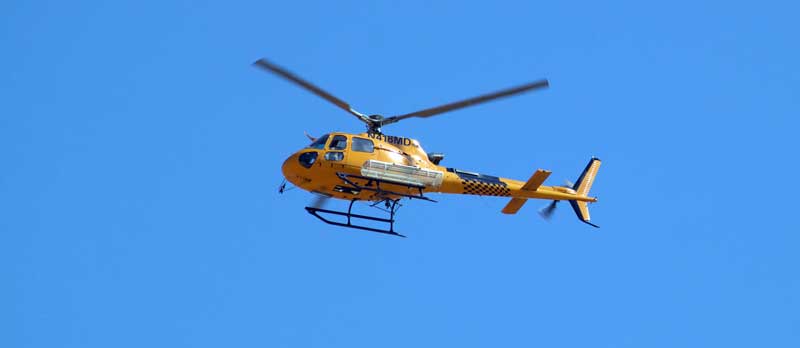
Jon Johnson Photo/Gila Valley Central: Crews continue to fight the fire using a variety of helicopters.
According to Cole, the back burn’s objective would be to light a controlled burn at the top of a ridge so it would back down toward its control line. The burns are done in strips and are performed with helicopter support with bucket drops for areas that start getting too hot.
Turkey Flat
The bulk of the fire suppression effort continues to be centered around protecting the 74 cabins at Turkey Flat.
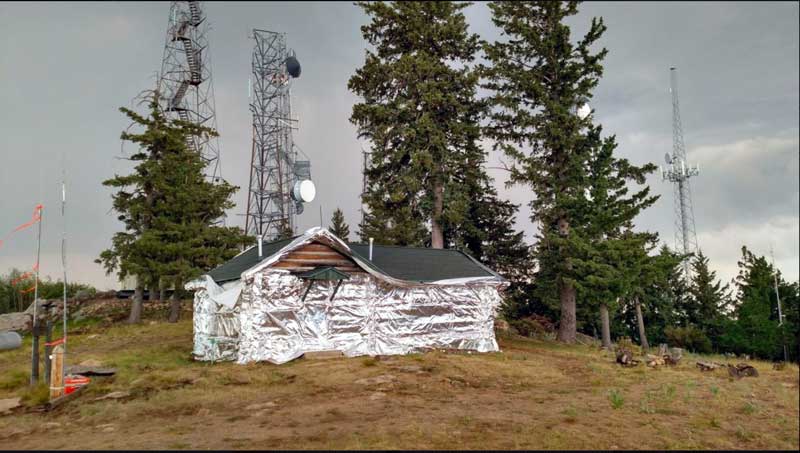
Contributed Photo/Courtesy Forest Service: A cabin at Heliograph was wrapped with heat-resistant materials. The fire went through the area but neither the cabin or communication towers were damaged.
Crews have worked tirelessly, removing small trees and other fuel while continuing to clean out the areas around the cabins. More than three miles of water lines have also been laid and approximately 40,000 gallons of water, which includes self-managing pump stations with 1,800-gallon tanks with 5-gallon fuel systems to run without anyone maintaining them if firefighters are not able to be inserted due to dangerous conditions. The area has been wetted down by the sprinkler systems for several days.
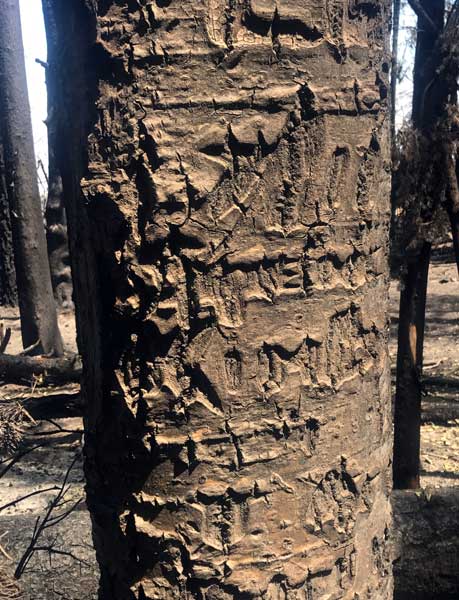
Contributed Photo/Courtesy Daryl Weech: The Kimball Tree as pictured June 27.
The area has various management action points that triggers different actions, including activating the sprinklers and performing burn outs around the cabins.
Cole said the fire has been backing down slope, however, and hasn’t reached the Turkey Flat area yet.
Some of the same protections have also been placed at the historic Angle Orchard, including clearing brush and preparing sprinkler lines. So far, the orchard has been spared from any damage.
Old Columbine
The Mount Graham International Observatory (MGIO), Bible Camp, Columbine and cabins at Old Columbine were downgraded to no longer being threatened by the fire last week.
On Saturday, the Forest Service released pictures of the area around Old Columbine, showing that no structures had been lost and trees were still standing.
MGIO Director Eric Buckley said the observatory had been operating on generator power with a two-person skeleton crew but that the crew would increase to four people and he is optimistic full power could return shortly.
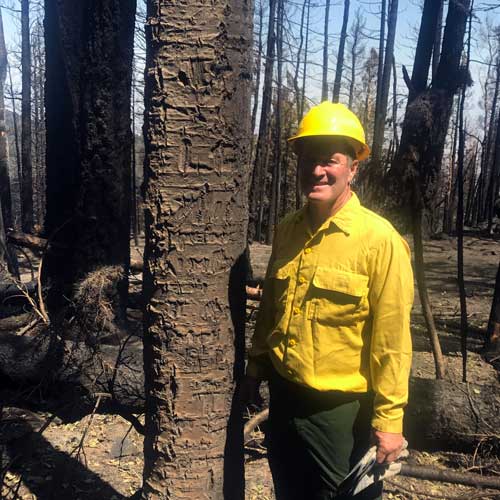
Contributed Photo/Courtesy Daryl Weech: Daryl Weech inspects the Kimball Tree on June 27.
The site is being examined for possible heat damage.
No structures have caught fire but the Kimball Tree was singed on one side and has a 50-50 survival chance, according to Old Columbine cabin owner Daryl Weech, who was given the opportunity to examine the area Tuesday. The tree is called the Kimball Tree after former Church of Jesus Christ of Latter-day Saints leader, Spencer W. Kimball, who is from the area and carved his name into the tree as a teenager.
Weech also reported that Arrow Tree, a tree hunters shoot an arrow into if their hunt is unsuccessful, is still green on the bottom and seems fine.
Northern Front
The only fire visible on Mount Graham’s northern side is in a few isolated pockets where firefighters are unable to be inserted. The areas are being doused with helicopters dropping buckets of water, as firefighters continue to shore up their fire lines at lower elevations.
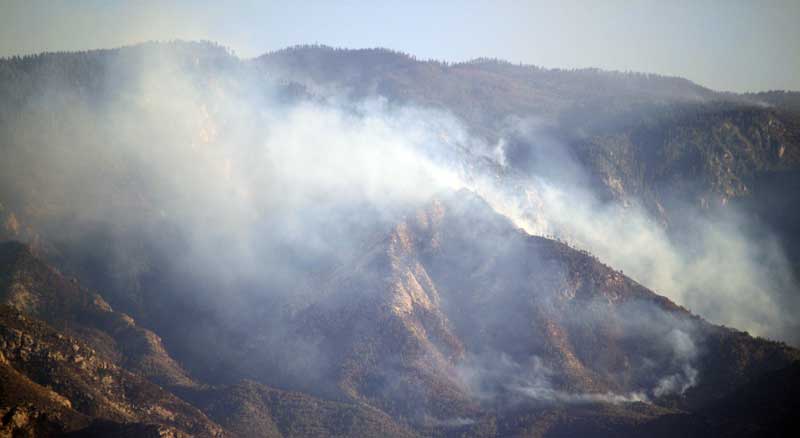
Jon Johnson Photo/Gila Valley Central: Smoke pours from pockets of fire on Mount Graham’s northwest side June 27.
Southern Front
The southern front continues toward Fort Grant and is being actively fought by firefighters. Additionally, contingency lines have been thought out for roughly around all of Mount Graham.
A public meeting will be held Wednesday night at Thatcher Middle School at 7 p.m. at 1300 N. Fourth Ave. in Thatcher.

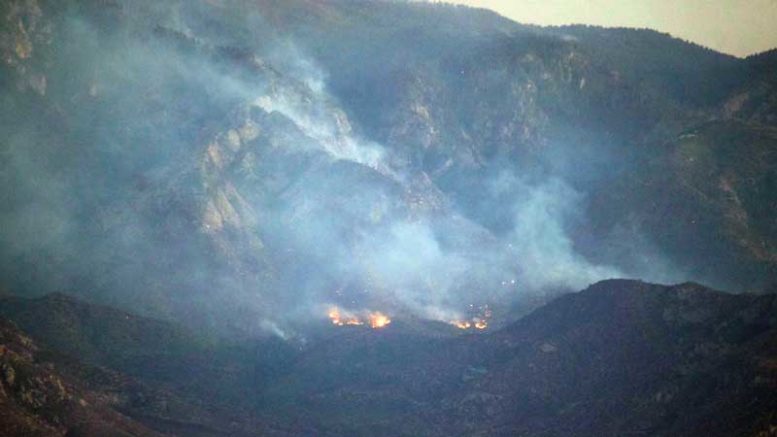








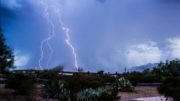
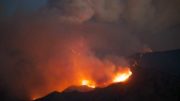
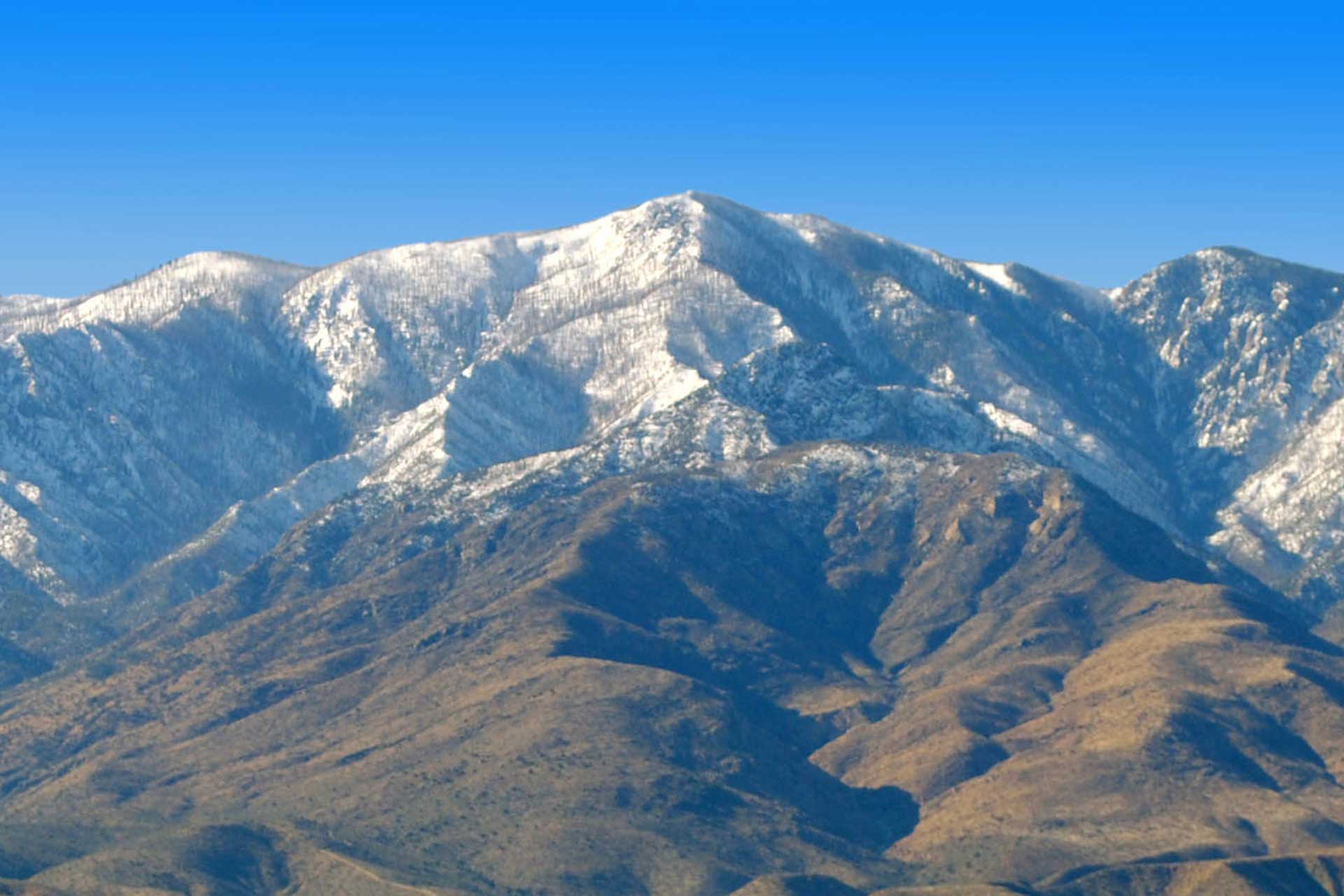
.jpg)